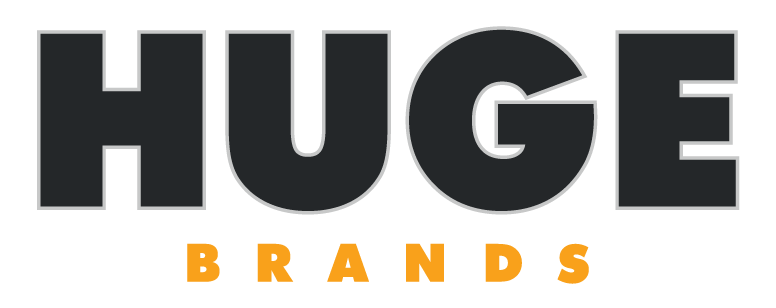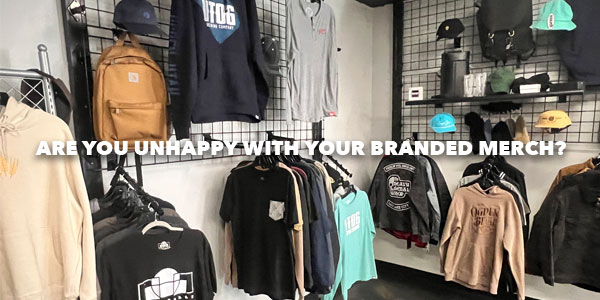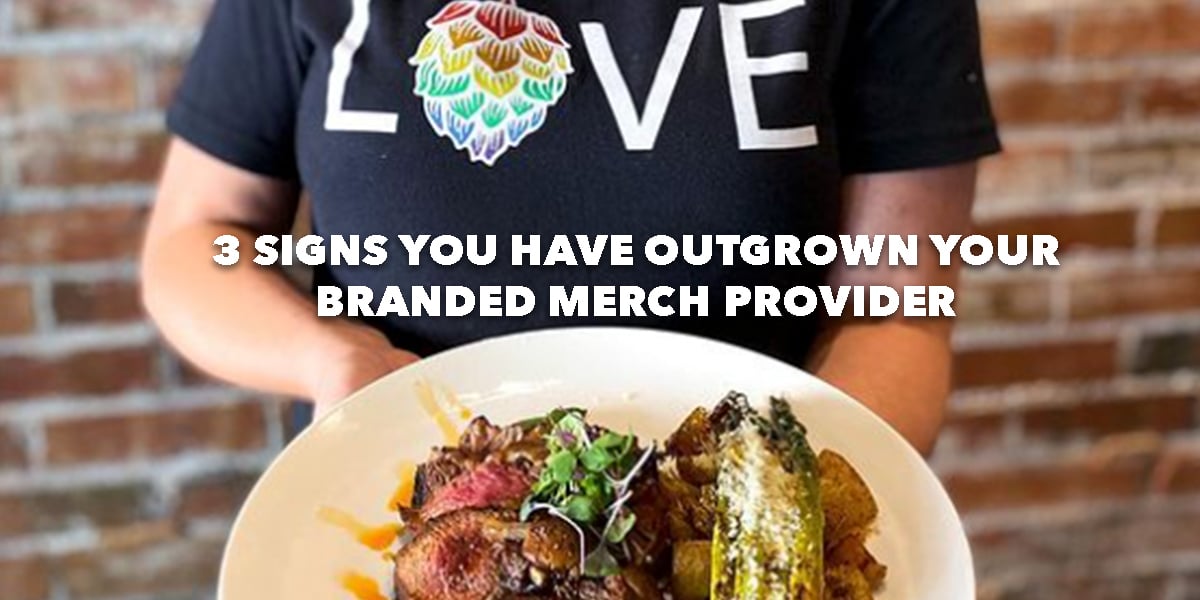The Ultimate Guide to Building a Brand Merch Program in 2024
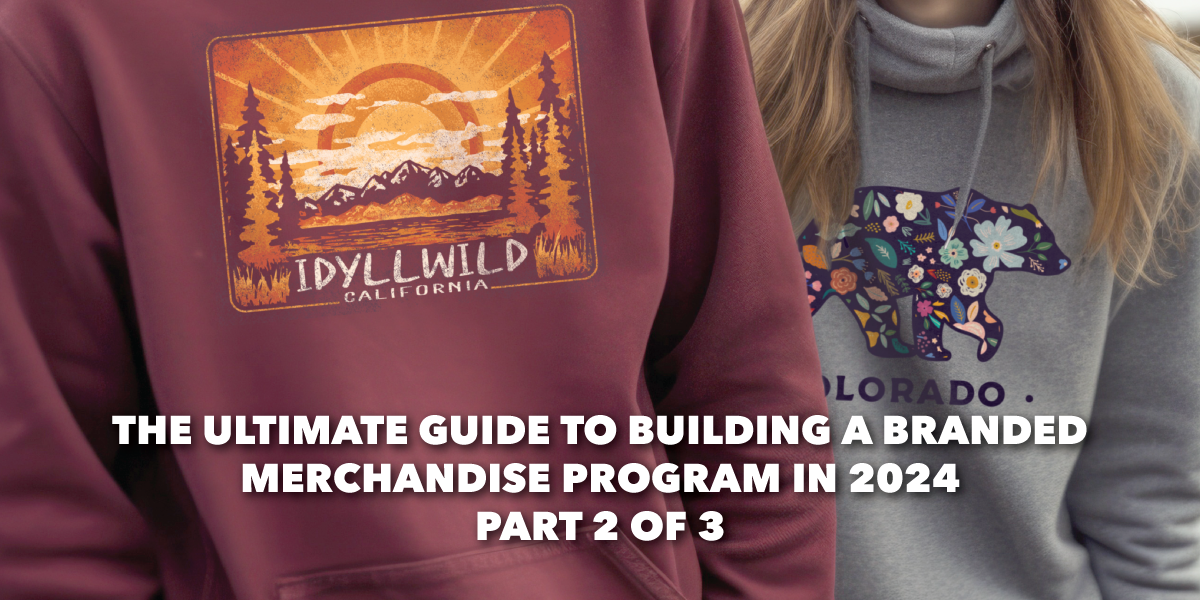
In part 1 of this series, we discussed the elements of a successful brand merchandise program and covered the differences between cheap swag and free giveaways, contrasting it with the value of branded merchandise and promotional merchandise programs.
Now that you understand some of the nuances and distinction between cheap swag and branded merchandise, it's time to show you how to build a branded merchandise program for your business.
In this guide to building a branded merchandise program you'll learn about:
- Why it's a good idea to create a branded merchandise program
- How to leverage the power of your brand to create a branded merchandise with an intentional strategy that resonates with your customers
- How to implement the elements of a branded merchandise strategy to build a successful branded merchandise program that performs well and is successful (generates revenue and delights your customers).
Table of Contents
- The Case for Creating a Brand Merch Program
- The Importance of Strategic Planning and Goal Setting for a Brand Merch Program
- How to Set Goals and Create a Strategy for Your Brand Merch Program
- Step 1: Identify your Target Audience
- Step 2: Creating a Brand Merch Program
- Step 3: How to Create your Brand Merch
- Step 4: How to Position your Brand Merch Program
- Step 5: How to Price Branded Merchandise
- Step 6: The Importance of Evaluating Your Branded Merchandise Program
- Conclusion
The Case for Creating a Branded Merchandise Program
Brands have existed for thousands of years. Brands arose as a way to build quality and signal trust.
During the Industrial Revolution, mass production allowed brands to experience seismic growth.
Today, when we think of brands, organizations with cult followings like Nike, Apple, and Coca-Cola are the first ones that come to mind.
Sales for these behemoths are greater than ever, but in recent years we have experienced a resurgence in the popularity of local brands and small businesses.
This spike can be attributed to a convergence of multiple events including the Covid-19 Pandemic, peoples' desire to go out more often, the craving for a personal connection, and the rise of the influencer economy.
Regardless of the size of your business, there is a strong case for building a robust branded merchandise program now more than ever:
- If you're a large business, you already have a cult following that likely spans many demographics. You have earned and maintain a solid reputation. Customers use your products on a reoccurring or frequent basis. Many of your brand evangelists and customers would be willing to wear your branded merchandise.
- If you're a small business, you likely have a niche following and a local tribe of customers that have strong feelings and take immense pride in what you do. Your customers would be eager to show off what you do with your branded merchandise.
- A branded merchandise program is perfect for creating visibility and representing your brand with intention.
The Importance of Strategic Planning and Goal Setting for a Branded Merchandise Program
All productive outcomes begin with an effective and intentional strategy. Football games are won by diligently following a playbook, growth in the gym occurs with a structured workout plan, and even a trip to the grocery store involves writing a list of what you plan to buy.
This is especially true in business. Any business activity that you do requires strategic planning, goal setting, execution, and evaluation.
Let's take a look at how an effective and intentional strategy works to build a branded merchandise program. We'll start with a fictional example, Ezra's Pizzeria, a local pizzeria in Gilbert, Arizona.
(Note: Although this example involves a pizzeria, the same steps and process can be applied to any business, including yours).

How to Set Goals and Create a Strategy for Your Branded Merchandise Program
"Success is 20% skills and 80% strategy. You might know how to succeed, but more importantly, what’s your plan to succeed?" - Jim Rohn
Ezra's pizzeria is a staple of downtown Gilbert, Arizona. In the 15 years that it has been in business, Ezra's Pizzeria has experienced steady growth.
Ezra's operation started out at home. From the time he was a kid, Ezra was always interested in cooking. He loved to experiment with new recipes and see the delight in others eyes when he would share one of his meals.
Ezra started experimenting with pizza recipes in 2009. Every weekend he would invite his family and friends over for a dinner party to try his new deep-dish pizza he. Ezra's pizza was always a massive hit with his acquaintances. They gave Ezra frequent compliments about the savory flavor and the chewy crust.
For years, Ezra had wanted to open a restaurant. He felt like he could bring his vision to life with a pizzeria.
In 2009, Ezra's pizzeria was born. Ezra decided to open his pizzeria in the heart of downtown, funding his new operation with his savings and a small business loan.
Ezra quickly learned that nothing about running a business comes easy. His, arduous 65 hour weeks quickly led to a need for additional staff, equipment, and tools. From years one to three, Ezra learned which pizzas were his customers' favorites. He also learned that they were avid sports fans. This insight led him to add a foosball table, corn hole boards, and a TV lounge where his customers could watch their teams play.
As customers spent more time at Ezra's pizzeria, it earned a reputation as a location where avid sports fanatics could go and talk about current events in the NFL, NBA, and MLB. Customers visited and speculate about what would happen in upcoming games, and talk trash with each other. Every week customers placed bets on "the game of the week" for $5. The customer that bet the closest to the actual score would win the entire pot.
It's 2024, and Ezra has heard of branded retail-quality merchandise. In the past, Ezra handed out free branded giveaways or swag items for events that he ordered from print-on-demand companies. When Ezra ordered his branded merchandise from a print-on demand company, he didn't receive guidance. He uploaded his logo to their website, and they shipped him the goods he ordered.
Ezra's branded merchandise wascheap quality, and customers didn't express much interest in them. When customers wore these T-shirts and lanyards, it was usually short-lived. Customers would wear them while doing a project around the house such as painting or mowing the lawn, but these items never became a staple of their wardrobe. Ezra knew that he needed to change his branded merchandise offerings and offer merchandise intentionally in order for them to be successful.
Does this story sound familiar? Like Ezra, you've most likely experienced many of the highs and lows of being a business owner. Over time, you have been able to steadily grow your customer base beyond what you initially imagined. Your business has a distinct, locale feel that is different from your competition.
You want to capitalize on the success of your brand and grow your customer base. In the past, you have handed out swag items, but now that you've heard of branded merchandise programs, what should your strategy be to get started?
Step 1: Identify your target audience
"There is only one winning strategy. It is to carefully define the target market and direct a superior offering to that target market." –Philip Kotler
You have a niche brand, and before you start designing or producing your branded merchandise, you must have a clear understanding of who your target audience is. It's important to do this because the entire purpose of a branded merchandise program is to sell your merchandise with intention. If you don't have an understanding of who your target audience is, your branded merchandise won't be effective.
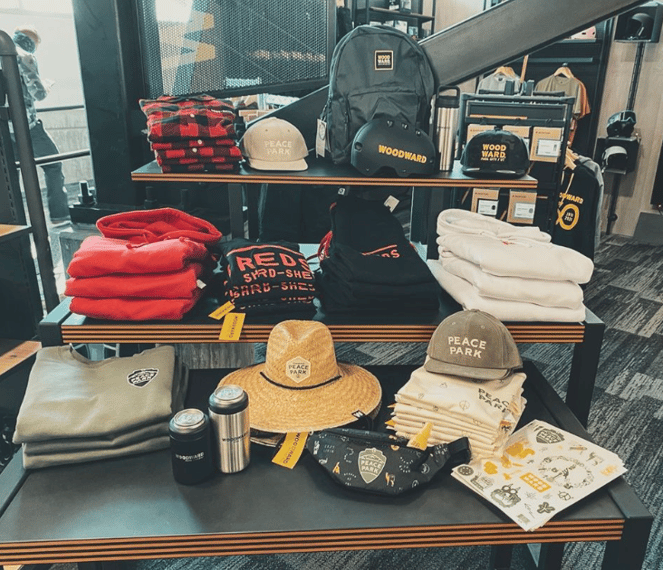
How to Identify your Target Audience When Building a Custom Merchandise Program
You might think that your target audience is everyone. That is incorrect. You have a niche brand, and you need to be able to define it. One of the greatest mistakes that ambitious business owners make is trying to appeal to everyone. There is a distinction between appealing to as many customers as possible and appealing to everyone:
- Appealing to as many customers in your target audience: When you are identifying your target market, you need to dig deep and identify what makes your brand successful. Here are some questions that you can ask yourself to kickstart this process:
- Why do customers buy from me instead of my competitors?
- What is/are my customer's favorite thing(s) about my product?
- What is the culture of my business?
- What are the core values that my business embodies?
- What age group(s) does my offering appeal to?
- How do I communicate with my customers/prospective customers?
- Why you shouldn't try to appeal to everyone: When business owners try to make their offering appeal to everyone, they look beyond their current target market and audience in an attempt to appeal to the general population. This might sound clever, but it is actually counterproductive to building a brand.
- Think about it this way: if Apple started offering cheap, $200 dollar smartphones that lacked most of the capabilities available in their typical iPhone lineup, these phones would cheapen their brand offering and confuse their customers. Apple became a household name by offering innovative, user-friendly products, that appeal to a high-end market. If they offered cheap phones that lack their best-selling capabilities it would turn off their current and prospective customers.
How to Identify Your Target Audience
If Ezra's Pizzeria was trying to identify its target audience, they would would ask themselves the questions listed above. The answers should look something like this:
- Why do customers buy from me instead of my competitors?:
Ezra's Pizzeria: "Customer's buy from me instead of my competitors because of how my crust tastes, and the atmosphere of my pizzeria. My pizzeria a friendly environment where customers can enjoy watching popular games and banter about sports, and it's located in a historic downtown building." - What is/are my customer's favorite thing(s) about my product?:
Ezra's Pizzeria: "My customers love the way that our crust tastes. They are particularly fond of our deep dish barbecue chicken Hawaiian pizza." - What is the culture of my business?:
Ezra's Pizzeria: "My pizzeria has a laid back atmosphere full of camaraderie. Customers can visit and grab a slice of pizza and their favorite beer, relax, and watch/talk sports with their friends." - What are the core values that my business embodies?
Ezra's Pizzeria: "The values of my business are that everybody is welcome, we create connection with the people and sports we are passionate about, we're always serving pizza made from fresh, premium organic ingredients, we give back to the community by volunteering for after-school sports programs, and we donate 1 percent of our revenue to support youth sports." - What age group(s) does my offering appeal to?
Ezra's Pizzeria: "My business mostly appeals to males in their 20s-40s that want to enjoy good food and watch sports with their friends. Football and basketball are the most popular sports that my customers enjoy watching. My customers like to listen to sports talk shows and podcasts, and are up-to-date on everything that pundits have to say. - How do I communicate with my customers/prospective customers?
Ezra's Pizzeria: "I typically send out monthly promotional coupons, promotions for raffles for giveaways, and invitations to come join us to watch a popular sports matchup."
With the information you gather, you can identify patterns about what makes your brand unique.This will help you form your branded merchandise strategy.
When we considered Ezra's Pizzeria, we identified themes of camaraderie, sports fanaticism, competition, community support for sports, and local connection and gathering. These themes represent multiple facets of Ezra's brand that can be implemented and leveraged in his branded merchandise solutions.
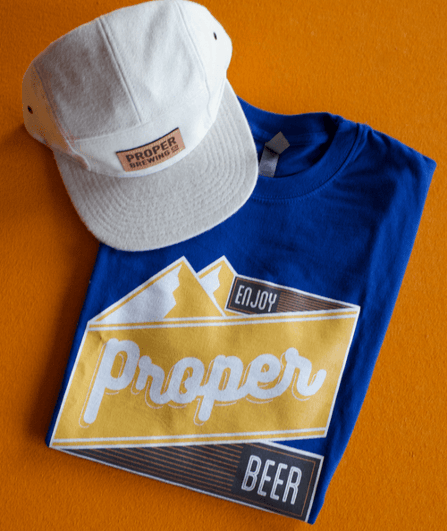
Step 2: Creating a Branded Merchandise Program
Now that Ezra has identified his target audience, he can use the information he gathered to develop an appealing branded merch program that is executed with intention. However, Ezra can only do this after he sets goals for the program and creates a comprehensive strategy for its scope. Remember, the difference between a branded merchandise program is to sell merchandise with intention as opposed to giving cheap giveaways for free.
Questions to ask yourself when setting goals for your custom merchandise program
Ezra might ask questions such as the following to help him set goals and strategize for his branded merchandise program:
- What will my monthly and quarterly expenses be for my merchandise program?
- What products do I want to include as part of my strategy?
- What will my ROI be for my branded merchandise program?
- By what point should my branded merchandise program be profitable?
- How should I position and market my branded merchandise program for it to be successful?
- How will I price my branded merchandise?
A branded merchandise company will help Ezra review these questions while creating his program.
In essence, the questions that you should ask before setting goals and creating your brand merch are similar to the questions you would ask for any business plan.
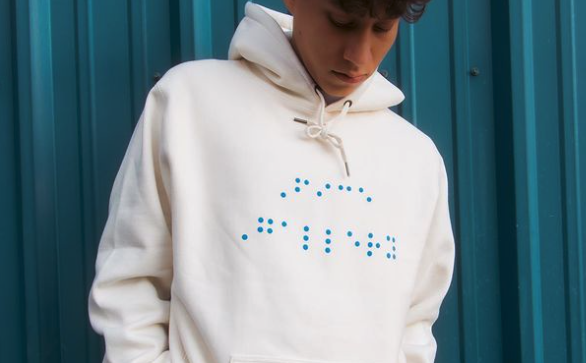
Setting Goals for Your Branded Merchandise Program
Using the example of Ezra's Pizzeria, here is what the numbers will look like. They might look different for your business, but the concept is the same.
- What will my monthly and quarterly expenses be for my brand merch?
- Ezra plans to buy 72 t-shirts, x truckers hats, and x beer glasses each month. To calculate the monthly cost of these items, he will multiply the unit cost for each item and add them all together. To calculate the quarterly cost, Ezra will add together the costs for every month of the quarter.
- What products do I want to include for my branded merchandise solutions?
- The products that you sale as part of your brand promotion strategy will depend on what is generally popular, what appeals to your target demographic, and what branded merchandise solutions represents your brand. For example, if you own a high-end winery, you might not sell t-shirts. for Ezra's Pizzeria, trucker hats with patches or custom embroidery would be a great option because hats sell incredibly well and are a popular option in sports. Ezra should offer trucker hats among other cool merch ideas.
- What will be my ROI on a branded merchandise program?
- A brand promotion strategy is only worthwhile if it is profitable. Luckily, it shouldn't be too hard to calculate your ROI on brand merch. To calculate your ROI on branded merchandise, you will take gross revenue (revenue generated from units sold per month), and subtract the amount spent on the program (this includes shipping, operational costs, cost of merchandise, and any labor if your hire somebody to run an online shop, for instance). Note: As a branded merchandise company, we provide all of these services and create a streamlined, comprehensive approach to branded merchandise and promotional goods. Contact us to learn more about our branded merchandise solutions.
- By what point should my branded merchandise program be profitable?
- As branded merchandise for small businesses becomes mainstream you are more likely to experience high demand for your merchandise. Proper placement and pricing (see below), helps branded merchandise become profitable more quickly.
- Another way to spur demand for your brand merchand is by creating marketing collateral. You can send emails out to your customers, include your goods as something that they receive if they buy something else, or offer a free item to customers that sign up for your loyalty program (this is a great way to get customers to experience your branded merchandise for free and get them stoked about purchasing it in the future). Remember, you are *not* getting your customers stoked to buy swag. You are building the value of your brand in order to sell profitable brand merch.
- How should I position and market my branded merchandise solutions for it to be successful?
- Will you display your brand merchand in the middle of the store? In a room at the end of a tour? In an online store? Read more below about the importance of properly positioning your branded merchandise and promotional goods.
- How will I price my brand merch?
- When priced correctly, branded merchandise spurs demand, generates profit, and creates added value. Learn more below about pricing your branded merchandise.
The implementation of any program inevitably involves adaptation, adjustments, and breaking down barriers as they arise. This is what makes a brand merch strategy different than buying swag or handing out swag for events. The point of creating a branded merchandise strategy is to have clear goals and an overall vision for what you want your branded merchandise program to become.
Step 3: How to create your brand merch or corporate merch
"Business is not just doing deals; business is having great products, doing great engineering, and providing tremendous service to customers. Finally, business is a cobweb of human relationships." - Jeff Bezos
You've set goals, created a vision for your branded merchandise program, and you have a strategy to move forward. Now it's time to execute on your plan and make it a reality.
It's time to produce your branded merchandise, so how do you get started?
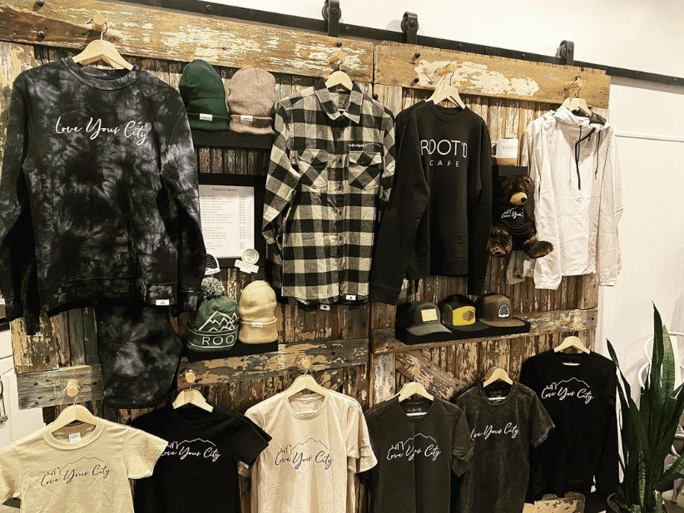
Which branded merchandise provider will you choose?
- Next, you want to consider which branded merchandise company you will choose. This decision has large implications for the overall effectiveness of your merch program. You can have the best strategy imaginable, but if your brand merch sucks, nobody will buy it and your program won't be profitable.
- When asking yourself which branded merchandise company to choose, there are multiple things to consider. We covered this topic more in-depth in this post, but essentially, you want to consider the following questions:
- What types of inks does the branded merchandise company use?
- Does the provider have an in-house art team to create logo concepts, or do they outsource design?
- When asking yourself which branded merchandise company to choose, there are multiple things to consider. We covered this topic more in-depth in this post, but essentially, you want to consider the following questions:
-
-
- Do they print in multiple locations or take a one-size-fits-all approach to their branded merchandise solutions?
- Do they offer customizations such as custom size, hem tags, or custom embroidery?
- What are their turnaround times for creating your merchandise?
- Do they offer accessories such as bulk order custom stickers, custom beanies, crop tees, custom water bottles, custom tumblers, coasters, hoodies, etc.?
- Do they offer shipping and fulfillment services?
-
Once you have created a list of merchandise providers that possess the qualities you are searching for, get in contact with their sales representatives and ask them detailed questions to make sure that you are a good fit. Your merchandise partner will create your merchandise, and when you receive it you are ready to begin selling.
Step 4: How to position your brand merch or corporate merch
Brand merch won't generate any revenue if it sits in a closet, or the back corner of a shop.
Now that Ezra has a branded merchandise solution that is a powerful representation of his brand and looks awesome, his offering must be properly positioned to sell as part of his brand promotion strategy.
Let's consider two examples:
How to position branded merchandise to support the local community
As mentioned previously Ezra's Pizzeria is heavily involved in the local sports scene. Ezra donates one percent of all of his revenue to support underfunded sports. There is numerous ways that he can incorporate branded merchandise into this strategy to get more people to buy into the cause.
- The pizzeria can hold a raffle for a certain number of items. If the buy in is 10 dollars per entry, and 100 customers enter for 10 items, Ezra raises 1,000 charitable dollars. This is a great way to support local causes and create brand awareness.
- Ezra can give away branded merchandise that people will want to wear to anyone that volunteers a certain amount of time to support after school sports programs.
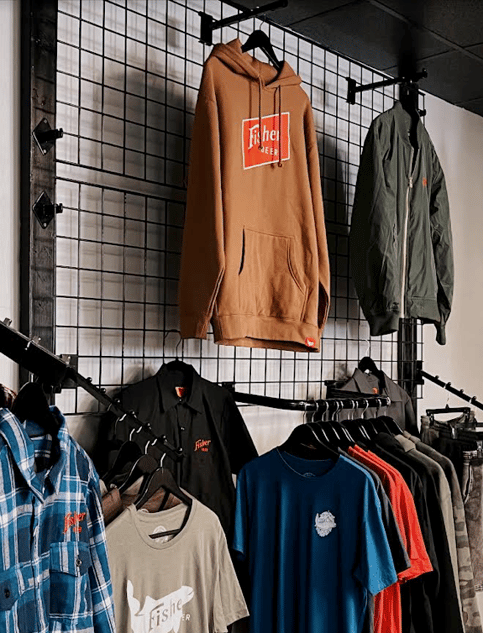
How to position corporate brand merch
Ezra's pizzeria holds a weekly competition for the NFL or NBA "game of the week". Every participant buys into the competition with a five dollar contribution. After the game has concluded, the pot is distributed in a winner-take-all fashion.
The pizzeria'a weekly competition is a prime opportunity to incorporate branded merchandise. Ezra can do the following:
In addition to receiving the cash pot, the winner of the competition can receive a branded t-shirt and beer glass exclusively available to the winner of the competition. A cool merch idea might include:
- A muscular football player dressed in his uniform wearing a helmet that says "Ezra's Pizzeria" holding a slice of pizza with a jersey that says "Reserved for Winners", or something to that effect.
- The player can be standing in the street of downtown Gilbert, to incorporate the local atmosphere into the merchandise.
- The shirt can have a hem tag that has #1 or the logo of Ezra's Pizzeria embroidered on it.
- Branded merchandise solutions such as the winning t-shirt and shot glass create a sense of exclusivity, and serve as a trophy that winners can wear and proudly display to other customers.
- An idea like this is likely to lead to increased buy-in for betting on the game of the week.
Considering the proper channel for positioning your brand merch
We've already covered the importance of time, location, and accessibility when considering merchandise placement as part of your brand promotion strategy.
Another critical consideration of brand merch positioning is which channels you should use to sell your merchandise. Venues include:
- Your website- If you don't sell your corporate merch anywhere else online, you should at least sell it on your website. When customers want to interact with your business virtually, they will typically visit your website. This is the perfect place to put a "store" tab in the upper right corner, so they can browse through your offerings.
Pro tip: It's worth the extra effort to invest time and money into taking quality photographs and web development that captures the quality of your merchandise on your online store. - Social Media- As a business, you're likely very active on social media. Because social media is a frequent touchpoint for customer interaction, and customers might visit your Instagram or Facebook more than your website, you should create an online Facebook shop to leverage customers interaction as a buying opportunity.
- Amazon- An Amazon store is another popular option for Ecommerce that you might want to consider, especially if you are running a large corporate merch program.
Pro tip: Amazon will take a portion of the revenue for each unit sold, so consider this before deciding if this channel is worth it. It will also require an employee that is capable of managing your channel and fulfilling orders (This can be the same person that is in charge of managing your online store). Always consider the costs before starting.
If you don't have the staff or bandwidth to offer online fulfillment for your customers, contact us, we can help.
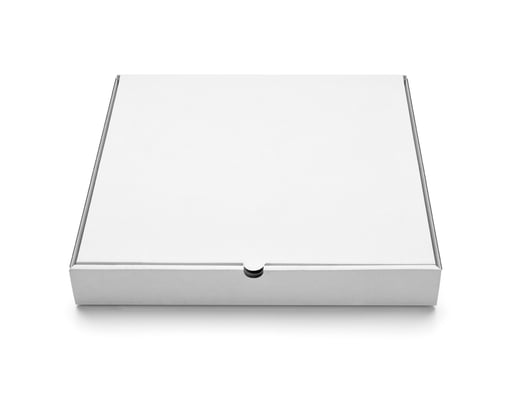
Examples of Brand Merch Positioned to Sell Well
If this is your first time selling branded merch, it can be hard to position your merchandise in a way that resonates with your customers. How do you do it? A good way to approach this question is to think of how you would want to experience to experience the merchandise if you were a customer.
For example, if you are a winery, it would make the most sense for your brand merch to be displayed at the end of your tour when customers are most excited. This is why when you go to Disneyland, there is always a gift shop at the end of the rides that contain merchandise related to the attraction. It's also why popcorn sells best at the movies, etc.
Grid City Brewery Works, a Brewery in Downtown Salt Lake does a great job of displaying it's branded merchandise. It is prominently displayed for customers to see as soon as they walk in or are ordering merchandise or beer.
Step 5: How to price your brand merch or corporate merch
Correct pricing is integral to the brand promotion strategy of your branded merchandise program:
Pricing assigns a psychological value to your offering
Imagine there are two small businesses that sell T-Shirts. One is priced at $3 and the other at $40. How would you perceive these two shirts, and how would this perception shape your decision making?
If you are like most people, the higher priced small business shirt would signal higher quality and the lower priced T-Shirt would signal lower quality.
It has been proven in scientific studies on price and perceived value that two identical wines, one priced low and the other priced high were perceived differently. Participants in the study didn't just perceive the expensive wine to be of higher quality, they also reported that it had a premium quality taste compared to the economically priced wine.
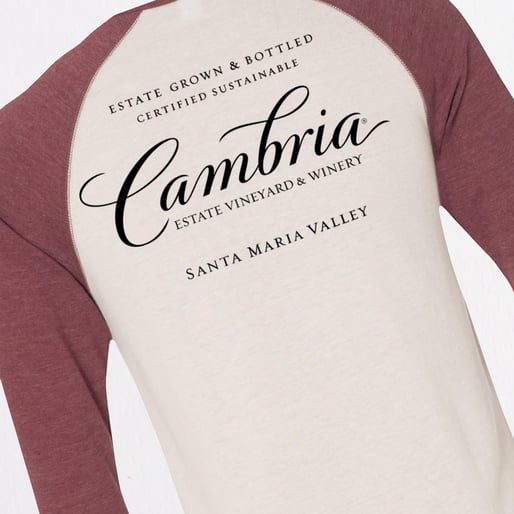
This study has massive implications for your brand promotion strategy. It shows that there is a direct correlation between pricing, perceived value, and customer experience.
With this knowledge in hand, you shouldn't manipulate customers by artificially setting high prices just for the hell of it, but you should price your merchandise in a way that communicates the value of your merchandise and enables you to be profitable.
Consider the anomaly of an apple priced at $100. A piece of ordinary fruit priced this high will surely turn customers' heads. They will wonder what is so special about the apple that makes it command such a high price. But if customers were to conduct further research on the apple and discover that there was nothing special about it, they wouldn't purchase it, and they would also feel very deceived.
This example demonstrates accurately priced products can lead customers to make an informed buying decision, and communicate value or prestige. But prices that are set artificially high (well beyond the price range of items in a similar category), or set beyond the value of what a customer considers fair will be rejected by customers and may lead to backlash.
Pricing your brand merch correctly enables you to hit your goals
In order to offer any product or service, it has to make sense financially. Offering your brand merch at the correct price enables you to do that. By setting a specific price, you can easily determine how much revenue your program will generate, and whether this amount is sufficient to hit your goal.Pricing shapes supply and demand; the right price enables customers to make an informed buying decision
Pricing has always shaped microeconomic factors of supply and demand. Pricing helps customers determine if a product is in their price range. Pricing also holds the power to influence who your buyers will be and the status of the object under consideration.
Contrary to what you think, most customers won't mind paying for merchandise priced between $30-$80, especially if they love your brand. If anything, this will raise the perceived value of your merchandise, leading to customers wearing your merchandise longer and more frequently.
Higher price influences greater customer retention
Branded merchandise is an ideal product because when priced correctly, you can make a considerably larger profit margin than many other products. Let's say that Ezra purchases 72 retail-quality t-shirts of various sizes for $10-$12. Because the shirts that he is selling as part of his program are retail-quality, they can be sold for $30 dollars, or a 58 percent profit margin.
How to take the work out of correctly pricing your merchandise
As a branded merchandise company, we provide you with set tiers of pricing for you to sell your brand merch. These competitive prices will enable you to generate high-margin revenue and sell your products. Essentially, all you need to do is use the price that we recommend and watch your sales increase.
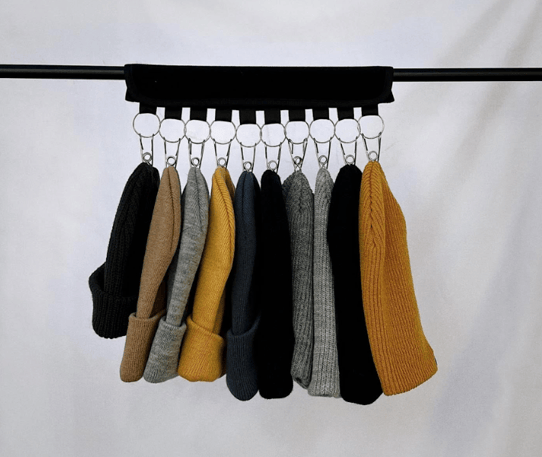
Step 6: The Importance of Evaluating Your Branded Merchandise Program
In many ways, a brand promotion strategy is similar to performing maintenance on a car. The process is mechanical, it doesn't happen organically, but requires constant fine-tuning and evaluation to run optimally.
Always be on the lookout for deficiencies in your operation, but just like your car, don't make any quick changes until you are able to draw a correlation between the issue and its effect.
Using our example above, Ezra might notice after his brand merch program has been running for six months that his embroidered hoodies are the lowest selling item but he is unsure why.
There are a variety of questions that Ezra can ask to research this issue:
- Are your embroidered hoodies not selling well because it's the summer months and the weather is too hot in Arizona?
- Do customers not like the design of the emboridered hoodies compare to the rest of Ezra's Pizzeria's merchandise?
- Are Ezra's embroidered hoodies displayed in such a way that customers aren't seeing them?

Tools for evaluating the effectiveness of your branded merchandise program and making necessary changes
This list of tools that you can use to evaluate the effectiveness of your branded merchandise program and make changes when necessary isn't comprehensive, but the following techniques are good starting points.
A/B testing- Think of A/B testing like running a science experiment. You select one variable that you think can be the issue and change it for a period of time while maintaining everything else the same. In our Pizzeria example, if Ezra has doubts about the positioning of his embroidered sweatshirts, he can put them at the front of his display for a few weeks and see if they sell better. If they aren't selling better in a few weeks, then the issue might not be positioning.
A/B testing is great for isolating variables to diagnose an issue. However, its weakness is that there are countless variables to identify when considering human psychology and behavioral economics.
Customer surveys- Customer surveys are a great way to get immediate feedback about an area of concern for your brand promotion strategy, especially if you personally know your customers, or if you have an online store and have data about specific customer purchases. You can use the feedback that customers provide about why they haven't purchased a specific item to make changes.
However, you should take this feedback with a grain of salt. It has been shown that consumers aren't the best at identifying why they make the buying decisions that they do.
A survey also runs the risk of getting a low response rate. The best way to get responses from a survey is to offer an incentive for taking it.
Professional evaluation- A benefits of partnering with a branded company as opposed to just a provider is that a branded merchandise company can perform an audit of your corporate merch program and help you troubleshoot the issues that you may be experiencing and implement changes.
A branded merchandise company will work by your side to evaluate and troubleshoot any roadblocks you experience with your program. You can implement their feedback to address any performance issues.
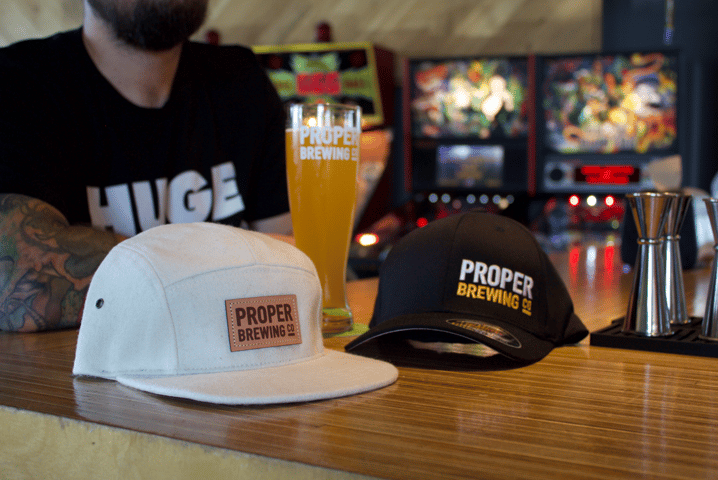
Conclusion
A brand merch program is intentional and strategic; if there's one thing to take away from this post, you should remember that a brand merch program is strategic and intentional. Buying cheap swag that you giveaway doesn't generate revenue, but leveraging branded merchandise with the power of a brand promotion strategy does. By following each strategic step outlined above, you will be able to:
- Create a branded merchandise strategy specifically tailored to your brand and its corresponding demographics, psychographics, and your customer's buying intent.
- Analyze the key performance indicators of your brand merch or corporate merch program that matter (KPIs).
- Strategically leverage your branded merchandise program to generate revenue instead of throwing random ideas at the wall to see what sticks or handing out cheap giveaways.
- Market and display your brand merch as part of a comprehensive brand promotion strategy in a way that resonates with your customers.
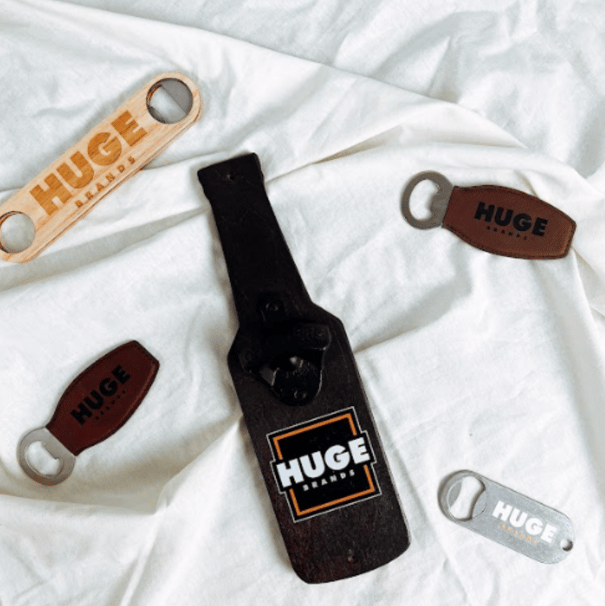
As a branded merchandise company, we have helped thousands of companies on their journey towards building effective, high-performing brand merch lines. The merchandise we produce doesn't just look amazing, it produces significant revenue for the brands that we work with. A few of our most noteworthy success stories include:
- Producing and creating the merchandise for many of the well-known breweries in the Salt Lake Valley
- Producing Lindsay Gurke, a well-known influencer's merchandise, for her popular retail line Get Your Pink Back.
- As part of our royalty program, we partner with FanX, one of the largest comic and fandom shows in the country, to produce the merchandise for their conventions.
These are just some of the examples of what we can do, but the possibilities are endless. No matter how large or small your business is, it can benefit from the proper brand merch.
